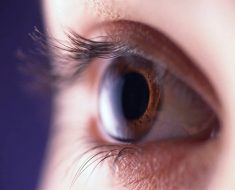Obesity is a growing epidemic affecting millions worldwide. It has numerous effects on various systems of the body leading to physiological changes that may cause the development of diseases like high blood pressure, heart disease, high blood cholesterol and type 2 diabetes.
Obesity also raises the risk of fatty liver disease, gall bladder disease, osteoarthritis and certain cancers. It is estimated that the cost of treating obesity related diseases contributes 2–7% of total national health care costs in developed countries.
Obesity is related to a number of effects on skin health as well. Obesity affects the skin barrier function, workings of the sebaceous glands and sebum production that keeps the skin moisturized and supple, sweat glands, small lymph channels under the skin, collagen structure and function, wound healing, small blood vessels under the skin, and subcutaneous fat.
Effects of obesity on the skin
-
Effects on skin barrier function
Obesity increases water loss across the skin to a great extent. In morbidly obese patients skin is significantly dry and skin repair after wounds is impaired.
-
Sebaceous glands and sebum production
Sebum plays a major role in acne development. It is an oily substance that is produced to keep the skin moisturized and supple. Acne occurs when the sebaceous channels are blocked and infected. Acne is clearly exacerbated by obesity-associated disorders.
In obese individuals androgens (male hormones), insulin, growth hormone, and insulin like growth factors are raised. These are all known risk factors for acne.
-
Sweat glands
Obese patients have larger skin folds and tend to sweat more profusely due to thick layers of subcutaneous fat.
-
Lymph channels
Obesity impede or slow lymphatic flow. This leads to collection of protein-rich lymphatic fluid in the subcutaneous tissue. This is called lymphedema.
-
Blood vessels of the skin
Obesity changes blood circulation of the skin leading to obesity-related microangiopathy and hypertension. Blood flow in the skin is increased in obese individuals.
-
Collagen structure and function and wound healing
Obesity is also associated with changes in collagen structure. Collagen forms the structure of the skin and helps in wound healing. However, obese patients rarely manifest facial wrinkles and weakening of the skin or skin laxity due to increased subcutaneous fat.
-
Subcutaneous fat
Subcutaneous fat is made up almost entirely of white adipose tissue. In normal humans it provides insulation and serves as energy storage. This adipose tissue contains adipocytes that secrete endocrine hormonal peptides like leptin and tumor necrosis factor. Obese individuals have excess subcutaneous fat.
Skin manifestations in obese and overweight individuals
Obesity is associated with a number of skin conditions. These include –
-
Acanthosis nigricans
This is a most common skin problem in obesity. Acanthosis nigricans appears as velvety, symmetriacal dark patches. It is most commonly observed in the arm pits, groin, back of the neck, elbows, knuckles, and face. Acanthosis nigricans is associated with insulin resistance.
-
Acrochordons
These are soft brown papules or growths seen commonly on the neck and in the armpits and groin. They are frequently seen in association with acanthosis nigricans
-
Keratosis pilaris
These lead to formation of spiny papules or growths on the external surface of the arms.
-
Hyperandrogenism and hirsutism
This is caused by high levels of male hormones. These features are common with polycystic ovarian disease and insulin resistance.
-
Striae distensae
These are commonly called stretch marks. They are long plaques found in areas with greatest tension and are commonly found on the breasts, buttocks, abdomen, and thighs. They appear as red marks turning violet, then finally becoming white depressed plaques.
-
Adiposis dolorosa
This is a rare condition with multiple, painful, subcutaneous lipomas seen in obese and postmenopausal women.
Skin diseases aggravated by obesity
Some skin diseases are aggravated by obesity and overweight. These include:-
- lymphedema
- psoriasis
- chronic venous insufficiency
- insulin resistance syndrome
- cellulite
- skin infections including fungal infections
- plantar hyperkeratosis
- hidradenitis suppurativa
- tophaceous gout
- intertrigo
Sources
- http://www.laboratoriosilesia.com/upfiles/sibi/D0707606.pdf
- http://www.adph.org/ALPHTN/assets/080812Giddens.pdf
- http://www.martin.uky.edu/Capstones_2010/Swiney.pdf
- onlinelibrary.wiley.com/doi/10.1111/j.1525-1470.2012.01738.x/abstract
- www.emaso-eg.org/…/Obesity%20and%20skin.pdf
Further Reading
- All Obesity Content
- What is Obesity?
- Causes of Obesity and Overweight
- Obesity, What Can be Done?
- What is Body Mass Index (BMI)?
Last Updated: Feb 27, 2019

Written by
Dr. Ananya Mandal
Dr. Ananya Mandal is a doctor by profession, lecturer by vocation and a medical writer by passion. She specialized in Clinical Pharmacology after her bachelor's (MBBS). For her, health communication is not just writing complicated reviews for professionals but making medical knowledge understandable and available to the general public as well.
Source: Read Full Article





